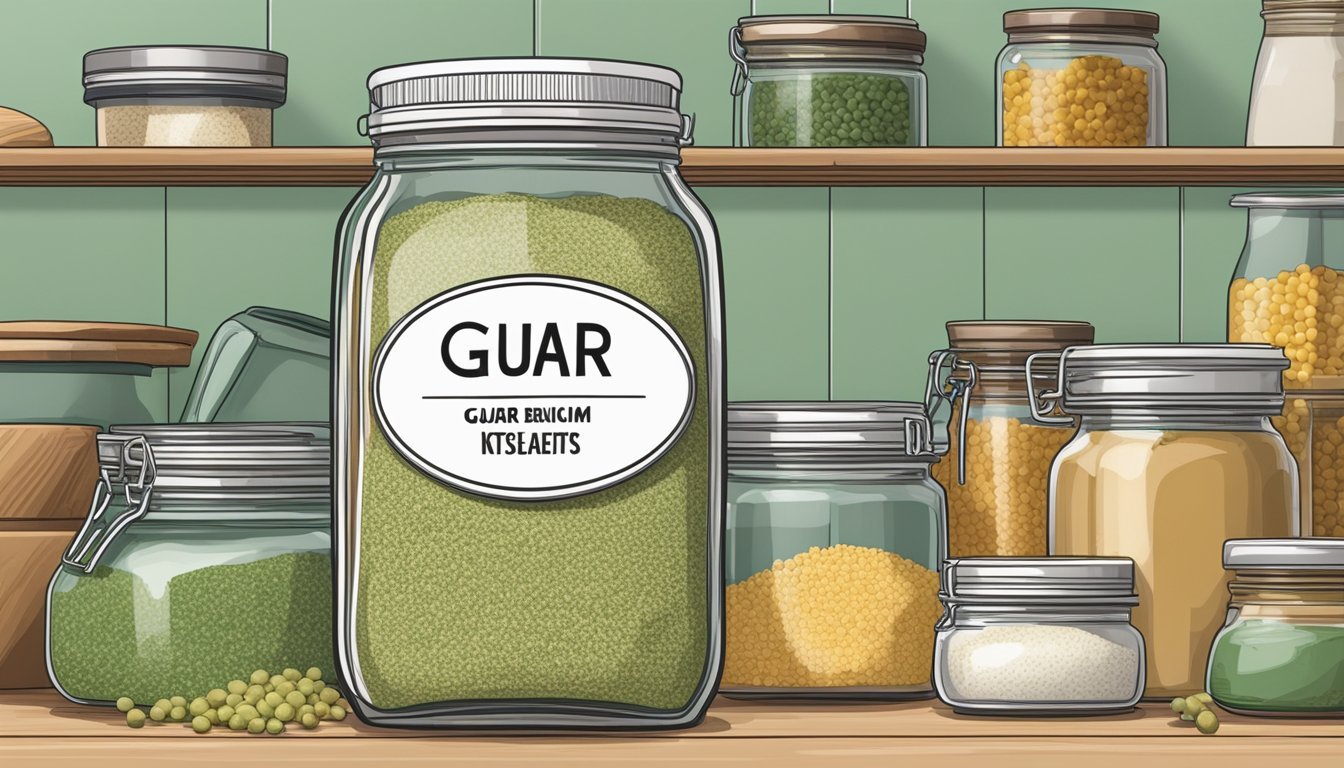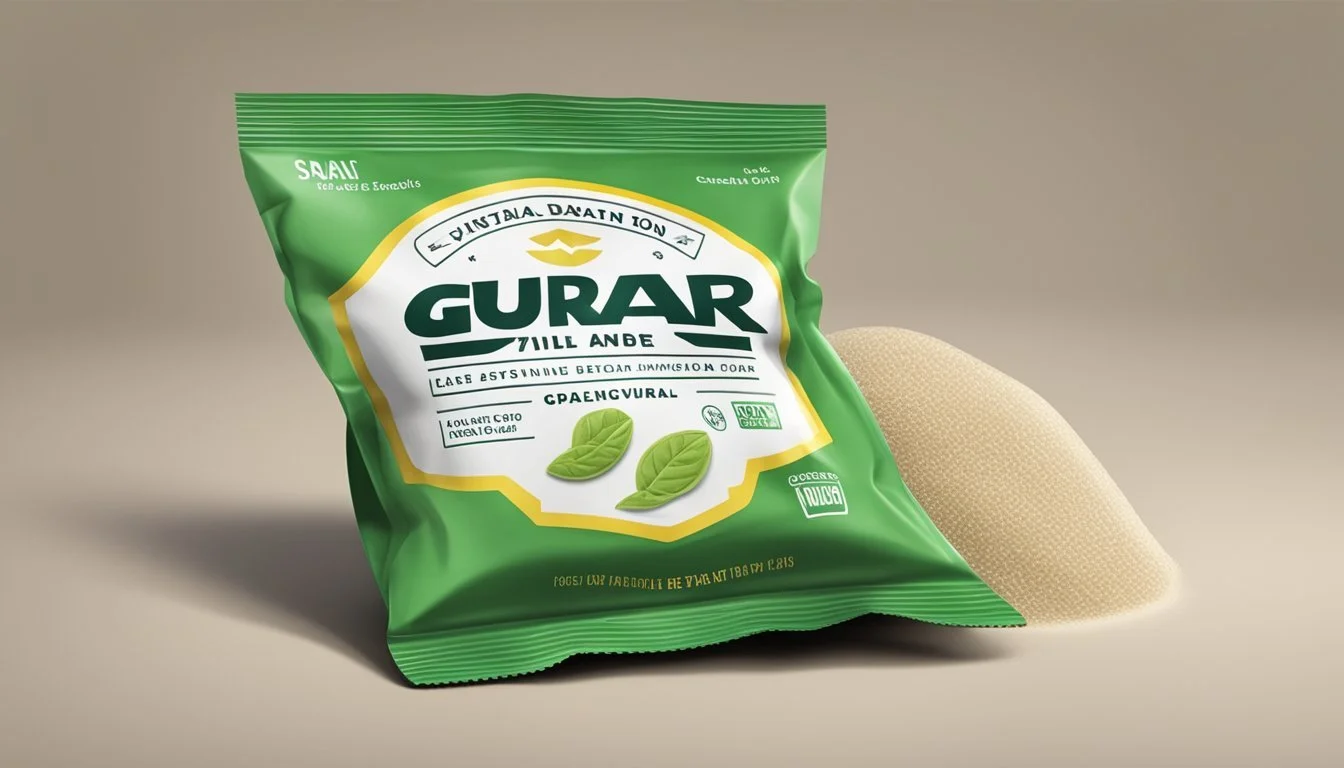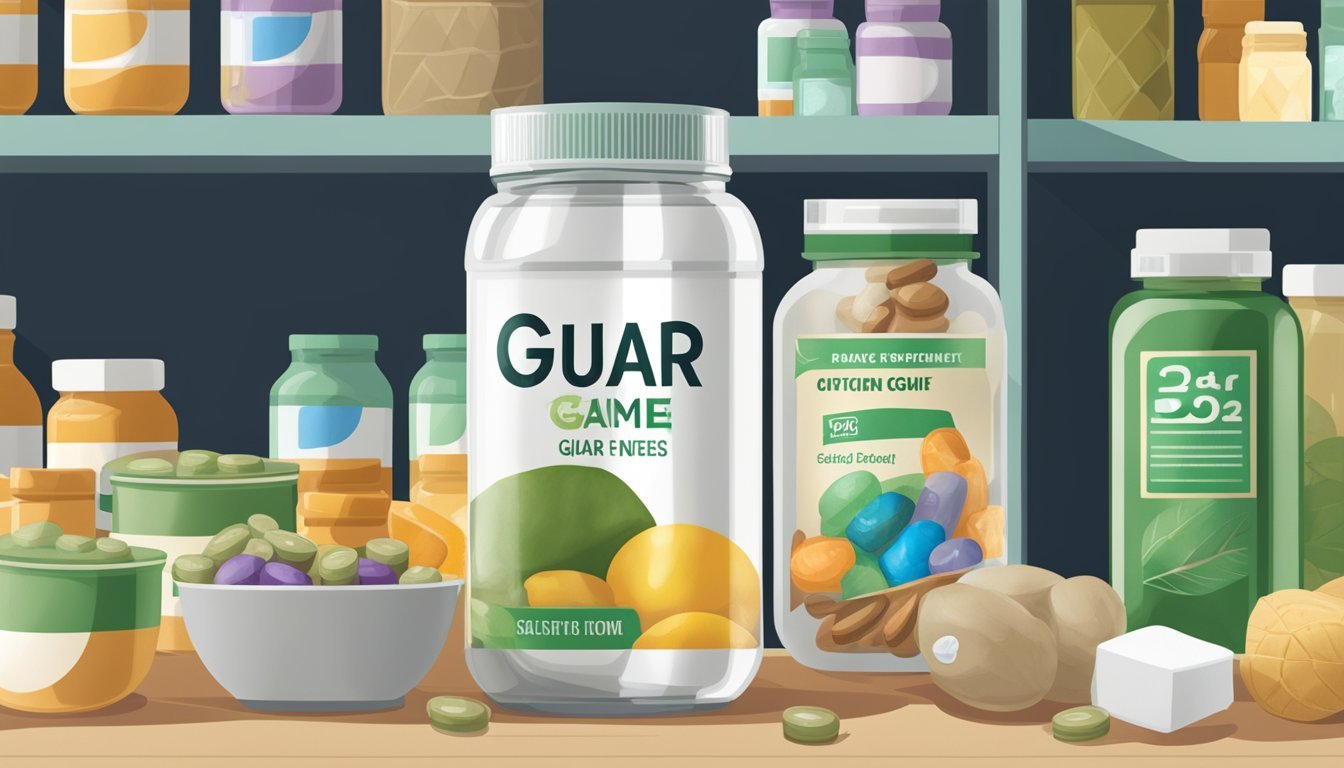Does Guar Gum Expire?
Shelf Life and Storage Tips
Guar gum, a popular thickening agent derived from the guar plant, is widely used in the food industry, particularly in gluten-free products. Its ability to enhance texture and provide consistency makes it a staple in many kitchens. Does guar gum expire? Yes, guar gum does have a shelf life.
To ensure maximum effectiveness, users should always check the expiration date on the packaging. When stored properly in a cool, dry place, guar gum can maintain its thickening properties throughout its shelf life, ensuring reliable performance in both culinary and industrial applications.
Proper handling and storage of guar gum are crucial for preserving its quality. Utilizing it within the recommended period guarantees its ability to improve texture and consistency in a variety of dishes.
Understanding Guar Gum
Guar gum is derived from the endosperm of guar beans, native to India and Pakistan. It is a galactomannan polysaccharide known for its high viscosity and thickening properties.
Composition and Structure
The primary component of guar gum is galactomannan, a complex carbohydrate. When mixed with water, it forms a gel-like substance, which makes it ideal for various industrial and food applications.
Uses and Applications
In Food Industry:
Acts as a thickening agent in sauces, dressings, and soups.
Used in baking for its ability to improve texture and elasticity.
Functions as a stabilizer in ice creams and yogurts to prevent crystal formation.
In Pharmaceuticals:
Utilized in tablet formulations for its binding properties.
Applied in dietary supplements for its fiber content.
In Other Industries:
Commonly used in the petroleum industry for well drilling operations.
Used in textile and paper industries as a thickening, sizing, and finishing agent.
Health Benefits
Guar gum is high in soluble fiber, which can aid in digestion. It may help in lowering blood sugar levels by slowing the absorption of sugar in the small intestine. Additionally, it can reduce LDL cholesterol, contributing to heart health.
Storage and Shelf Life
To maintain its effectiveness, guar gum should be stored in a cool, dry place. It is highly hygroscopic and should be protected from moisture. When stored properly, it can last up to two years. Avoid exposing it to water, as it readily forms gels upon contact.
Chemical Structure and Properties
Guar gum is a natural polysaccharide extracted from the guar bean. Its chemical structure and unique properties lend it to a variety of industrial applications.
Solubility and Viscosity
Guar gum dissolves readily in cold or hot water. This solubility results from its nonionic nature and flexible molecular structure. When dissolved, it forms a highly viscous solution even at low concentrations.
The ability to achieve such viscosity makes guar gum a preferred thickening agent in many industries, including food and cosmetics. Viscosity of guar gum solutions is influenced by factors such as temperature, pH, and the presence of salts. Tables and lists of these factors often guide its use in different applications.
Galactomannan Composition
The primary structure of guar gum consists of the galactomannan polysaccharide. The backbone is a linear chain of mannose residues linked by β(1→4) glycosidic bonds.
Attached to this backbone are galactose side branches, connected by α(1→6) glycosidic bonds at approximately every second mannose unit. This structure allows guar gum to form hydrogen bonds with water, leading to its thickening properties. The unique composition of galactomannan is critical for its performance in various formulations and applications.
Guar Gum in Food Production
Guar gum is widely utilized in the food industry due to its versatile properties. Key applications include its role as a thickening agent, its use in gluten-free baking, and its incorporation in dairy products and dressings.
As a Thickening Agent
Guar gum's primary use in food production is as a thickening agent. It is highly valued for its ability to increase the viscosity of products even at low concentrations.
Functionality: When dissolved in water, guar gum forms a gel-like substance. This makes it ideal for products like soups, sauces, and gravies, where a thicker consistency is desired.
Advantages: It provides an economical option because a small amount achieves significant thickening. Furthermore, it remains effective across a broad range of temperatures and pH conditions, enhancing its versatility.
Gluten-Free Baking
In gluten-free baking, guar gum plays a crucial role by acting as a binding agent. This compensates for the absence of gluten, a protein that gives baked goods their structure and elasticity.
Structure Improvement: Guar gum helps trap air and retain moisture, which can be especially beneficial in products like bread, cookies, and cakes.
Texture Enhancement: It works to prevent crumbling and improves the texture of gluten-free baked goods, making them more palatable and closer in texture to conventional baked items.
Dairy and Dressings
Guar gum is also found in various dairy products and dressings, where it serves multiple roles.
Stabilization: In dairy products like ice cream and yogurt, guar gum helps prevent ice crystal formation and maintains a smooth texture. It enhances mouthfeel and prolongs shelf life.
Emulsification: In dressings and sauces, guar gum acts as an emulsifier, ensuring that oil and water components remain mixed. This prevents separation and maintains a consistent texture over time.
Examples: Common products containing guar gum include salad dressings, mayonnaise, and numerous low-fat dairy items, reflecting its widespread relevance in food production.
Health and Nutrition
Guar gum plays a significant role in health, particularly regarding dietary fiber benefits and its impact on weight management and digestive health. Comparing it to other fiber supplements can provide a clearer understanding of its efficacy.
Dietary Fiber Benefits
Guar gum is a soluble fiber derived from the seed of the guar plant. It helps in slowing the absorption of sugar in the bloodstream, which can be particularly beneficial for individuals with diabetes.
This soluble fiber forms a gel-like substance when mixed with water, which can help lower cholesterol levels by binding to bile acids in the intestines. This not only reduces cholesterol absorption but also helps with regular bowel movements, contributing to improved digestive health.
Weight Management and Digestive Health
In the context of weight management, guar gum can increase the feeling of satiety, or fullness. By expanding in the stomach, it creates a sense of fullness that can reduce overall food intake, aiding in weight loss efforts.
For digestive health, guar gum acts as a prebiotic, promoting the growth of beneficial gut bacteria. This can alleviate problems such as constipation and irritable bowel syndrome (IBS). Including guar gum in soups and other dishes can be a practical way to incorporate it into the diet.
Comparing Fiber Supplements
When comparing guar gum to other fiber supplements, it's important to note its unique gelling properties. This makes it particularly effective in products requiring thickening and stabilization, such as soups and sauces.
While psyllium and methylcellulose are also popular fiber supplements, they lack the binding and textural benefits found in guar gum. Each has its own advantages, but guar gum's versatility in both culinary applications and as a dietary supplement positions it as a valuable addition to a balanced diet.
Overall, guar gum offers significant health benefits through its role as a dietary fiber, aiding in blood sugar control, weight management, and digestive health.
Industrial and Non-food Uses
Guar gum serves several industrial and non-food applications due to its thickening, stabilizing, and gelling properties. Key industries include textiles, mining, explosives, pharmaceuticals, and cosmetics.
Textile Industry Applications
In the textile industry, guar gum is indispensable due to its viscosity and film-forming capabilities. It aids in sizing and finishing processes, providing a protective film on yarns to reduce breakage during weaving. Additionally, guar gum acts as a thickener in textile printing, ensuring dye prints are sharp and evenly applied. This leads to better quality and more durable fabrics. Its biodegradability also makes it an environmentally friendly option for textile manufacturers.
Mining and Explosives
Guar gum finds application in the mining industry, particularly for its use in hydraulic fracturing (fracking) and ore flotation. It acts as a flocculant, helping in the separation of desired minerals from gangue. In explosives, guar gum serves as a waterproofing agent and binder. Its ability to control viscosity and water loss is crucial in manufacturing water-gels and slurry-based explosives, enhancing the overall performance and safety of these materials.
Pharmaceutical and Cosmetic Uses
In pharmaceuticals, guar gum is employed as a binder, disintegrant, and controlled-release agent in tablet formulations. It helps improve the stability and efficacy of medications. In cosmetics, guar gum enhances the texture and spreadability of products like lotions, creams, and toothpaste. It stabilizes emulsions, ensuring consistency and quality. Moreover, its natural origin and safety profile make it a preferred ingredient in personal care products.
Health Concerns and Dietary Considerations
Guar gum has both benefits and potential issues related to allergies, blood sugar levels, and various regulatory standards. It's important for consumers to understand these aspects before incorporating guar gum into their diets.
Allergy and Intolerance
Guar gum can cause allergic reactions in some individuals. Symptoms may include skin rashes, hives, or respiratory difficulties. People with irritable bowel syndrome (IBS) may also experience bloating, gas, or increased abdominal discomfort after consuming guar gum.
It is recommended for those with known allergies or sensitivities to be cautious and consult a healthcare professional.
Impact on Blood Sugar and Digestive System
Guar gum is celebrated for its positive effects on blood sugar levels and digestive health. As a soluble fiber, it slows sugar absorption, potentially aiding in glucose management. This can be particularly beneficial for individuals managing diabetes.
Moreover, it forms a gel-like substance in the gut, promoting regular bowel movements. This can ease constipation and help stabilize digestive processes, making it useful for people with various digestive concerns.
Regulations and Certification
The regulatory status of guar gum varies by country. In the United States, it is classified as Generally Recognized As Safe (GRAS) by the FDA. For organic and non-GMO certifications, consumers should look for relevant labels on product packaging.
Certified products ensure that the guar gum meets specific standards, providing an extra layer of security for health-conscious individuals.
Guar Gum Shelf Life and Expiry
Guar gum has a notable shelf life when stored under ideal conditions, but it is essential to prevent moisture and contamination to maintain its efficacy. Proper storage plays a crucial role in the longevity of guar gum.
Factors Affecting Expiration
Guar gum's shelf life ranges from 12 to 24 months. Key factors include moisture, temperature, and light exposure.
Moisture is the primary concern, as guar gum is highly hygroscopic. Exposure to water can create clumps and reduce its thickening properties.
Proper temperature control is vital. Store guar gum in a cool place, avoiding heat sources that can accelerate degradation.
Lastly, light exposure should be minimized. Sunlight can cause chemical changes in guar gum, negatively impacting its stability.
Proper Storage Methods
To maximize guar gum's shelf life, it's essential to store it correctly. Use airtight containers to protect against moisture and humidity. Keep these containers in a cool, dry place, away from direct sunlight.
Clean, dry utensils are important when handling guar gum. This prevents contamination, which can lead to spoilage. Always check expiration dates before use to ensure the product remains effective.
For longer shelf life, consider storing guar gum in an environment with controlled ph levels. This helps stabilize the product and maintain its quality over time.
Comparative Analysis
Guar gum, while widely used, is often compared to other thickeners based on its effectiveness and specific applications. This section breaks down how guar gum stacks up against other agents and its suitability for various uses.
Guar Gum Versus Other Thickeners
Guar gum is highly efficient as a thickening agent, especially in low concentrations. Xanthan gum, another popular thickener, also serves a similar role but can create a different texture and mouthfeel.
Cornstarch, commonly used in cooking, is less effective in cold applications where guar gum excels due to its ability to hydrate rapidly without heat.
Gums like locust bean gum and carrageenan have unique properties that may be preferred in dairy products for achieving a creamy consistency, roles guar gum can also play, albeit differently.
Thus, the choice between guar gum and other thickeners often depends on the desired texture, temperature conditions, and specific end-use requirements.
Selection for Specific Applications
In the food industry, guar gum is favored for its versatility. It acts as a stabilizer, thickener, and emulsifier in products like sauces, dressings, and baked goods. Guar gum's ability to remain stable in both cold and hot applications makes it a go-to for various formulations.
In pharmaceuticals, guar gum's natural origin and high fiber content make it suitable for use in laxatives and dietary supplements.
The cosmetic industry leverages its emulsifying properties to improve the texture and stability of creams and lotions.
In oil well drilling, guar gum's ability to increase the viscosity of water-based drilling fluids helps in effective drilling operations. The selection criteria here hinge on the specific functional requirements of each application, highlighting guar gum's broad utility.









